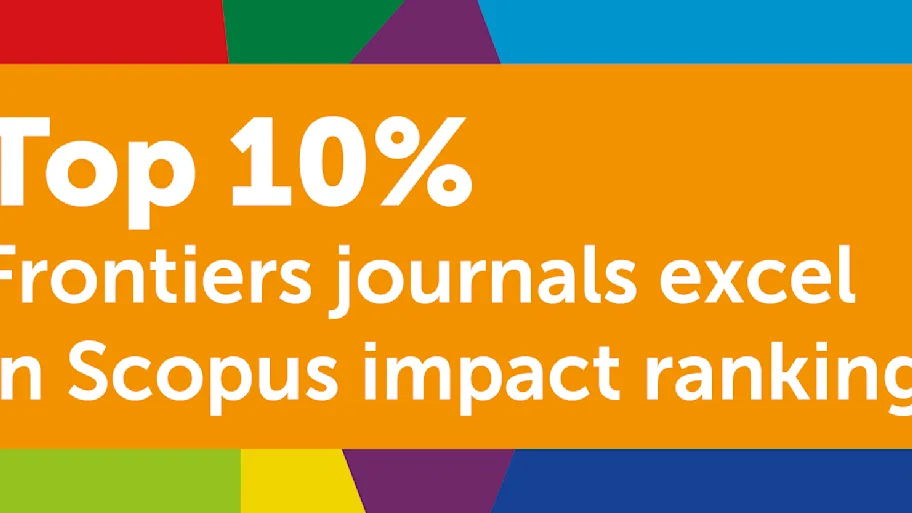
- Science News
- Impact analysis
- Journal impact: Frontiers in Microbiology
Journal impact: Frontiers in Microbiology
Frontiers in Microbiology is the world’s most-cited Microbiology journal & ranks in the top Impact Factor and CiteScore percentiles

Frontiers in Microbiology continues to rank among the world’s top microbiology journals in terms of influence and quality, as shown by our analysis of the 2017 Journal Citation Reports (JCR-2017; 2018, Clarivate Analytics), 2017 CiteScore edition (2018, Scopus, Elsevier) and other impact metrics.
The world’s most-cited journal in the JCR category of Microbiology, with 13,865 citations in 2017 to 2,503 articles published in 2015 and 2016 (Figure 1)
The world’s most-cited journal in the CiteScore category of Microbiology, with 18,579 citations in 2017 to 4,432 articles published in 2014, 2015 and 2016 (Figure 1)
Ranks in the 75th percentile of journal Impact Factors in the JCR Microbiology category, with an Impact Factor of 4.019 (Figure 2)
Ranks in the 84th CiteScore percentile in the Microbiology category, with a CiteScore of 4.19 (Figure 2)
9,600 published articles to date
78,400 citations to date
35 million article views and downloads to date
Articles mentioned 1,100 times in the news to date
Articles mentioned 43,600 times on social media to date

Figure 1: Analysis of the top 10 most-cited journals in the JCR Microbiology category (JCR-2017, released in 2018 by Clarivate Analytics) and CiteScore Microbiology category (2017 edition, released in 2018 by Scopus, Elsevier). Bar plots show the total number of citations in 2017 to articles published in 2015 and 2016 (JCR) and 2014, 2015 and 2016 (CiteScore), with Frontiers in Microbiology in red. A total of 125 journals are listed in the Microbiology category in the 2017 JCR edition, of which 22 are Open Access. A total of 133 journals are listed in the Microbiology category in the 2017 CiteScore edition, of which 29 are Open Access.

Figure 2: Analysis of Impact Factor and CiteScore rankings in the JCR Microbiology category and CiteScore Microbiology category. Grey lines represent all journals in each category ranked by their 2017 Impact Factor and CiteScore percentiles, with Frontiers in Microbiology shown as a red dot. Impact Factor is the average number of citations received in 2017 to articles published in 2015 and 2016, while CiteScore represents average citations in 2017 to articles published in 2014, 2015 and 2016. A total of 125 journals are listed in the Microbiology category in the 2017 JCR edition, of which 22 are Open Access. A total of 133 journals are listed in the Microbiology category in the 2017 CiteScore edition, of which 29 are Open Access; however the analysis here includes only those journals with a full three-year publication history, that is, with published articles in 2015, 2016 and 2017.

Top research in 2017
2017’s top articles include discoveries and insights on the microorganisms in your gut, antibiotic resistance, how growing in the International Space Station affects bacteria, and much more.
Hottest Research Topics
Bifidobacteria and their role in the human gut microbiota
Genetics of acquired antimicrobial resistance in animal and zoonotic pathogens
Microbiology of the rapidly changing polar environments
Microorganisms, pesticides, antibiotics, and organic pollutants: exploring the interactions and biotechnological applications
Two of the ten Research Topics finalists in the 2017 Spotlight Award were also published in Frontiers in Microbiology:


Top article picks
Personalization of the microbiota of donor human milk with mother’s own milk
Mining the volatilomes of plant-associated microbiota for new biocontrol solutions
Phenotypic changes exhibited by E. coli cultured in space
Soil microbiome is more heterogeneous in organic than in conventional farming system
Toward a metagenomic understanding on the bacterial composition and resistome in Hong Kong banknotes
Beneficial microorganisms for corals (BMC): proposed mechanisms for coral health and resilience
A new approach to modify plant microbiomes and traits by introducing beneficial bacteria at flowering into progeny seeds
Advances in developing therapies to combat Zika virus: current knowledge and future perspectives
Antifungal therapy: new advances in the understanding and treatment of mycosis
Real-time assessment of Staphylococcus aureus biofilm disruption by phage-derived proteins
Scientific excellence at scale
The impressive performance of Frontiers in Microbiology — and all Frontiers journals listed in the JCR and CiteScore metrics — reflects the continued success and influence of the Frontiers Open Science model of scientific excellence at scale.
All of this is only possible thanks to our research community and stellar editorial board. Frontiers congratulates Field Chief Editor Martin Klotz and all Specialty Chief Editors, as well as the diligent work of the Associate and Review Editors, authors and the Frontiers Journal Management team, for this outstanding achievement.






